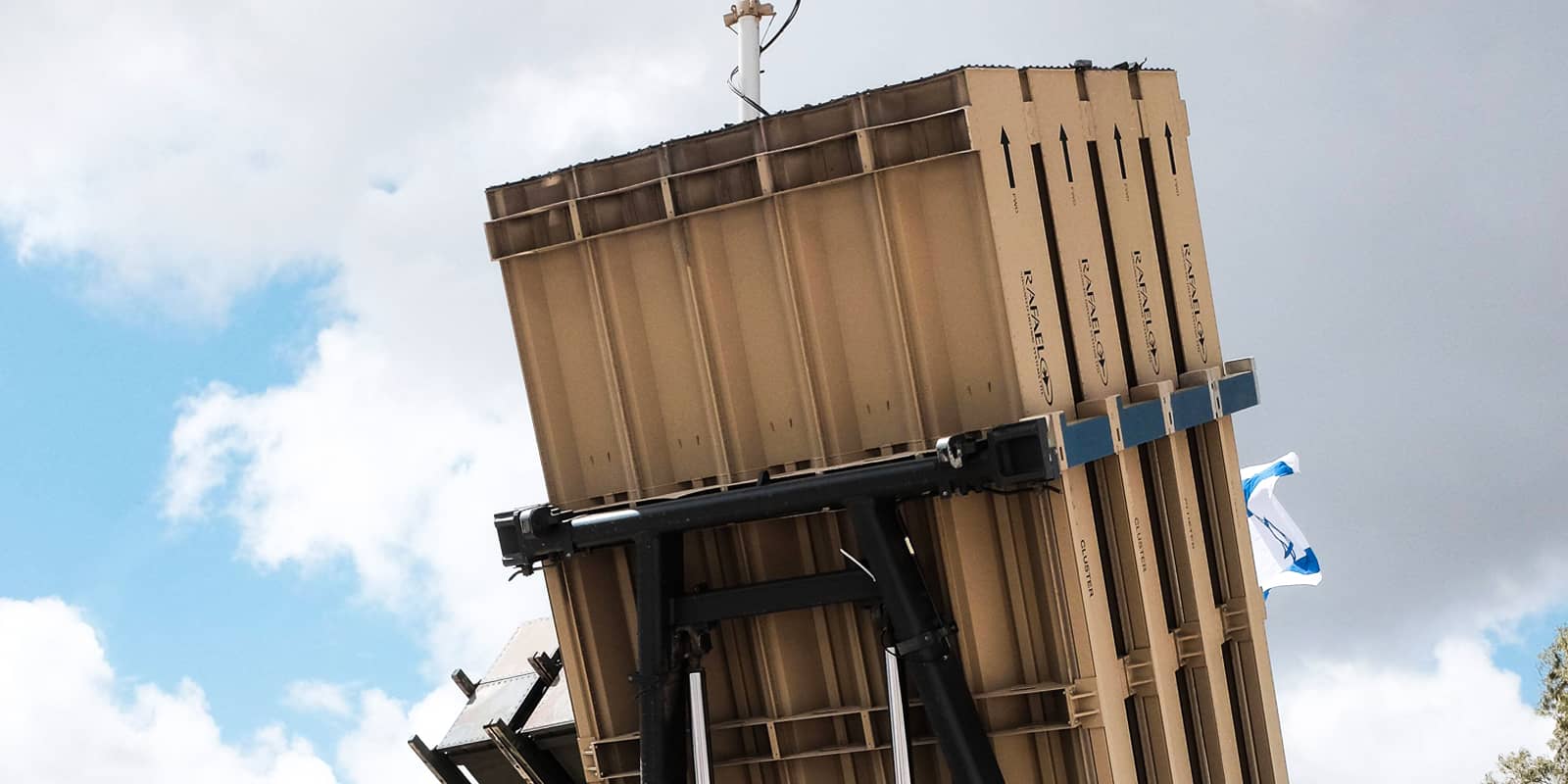“Ayesh 250” was fired toward IDF Northern Command headquarters in Safed. Hamas’ flagship rocket, named after terrorist mastermind, was intercepted and destroyed by Israel’s David Sling.
The Israel-Hamas war that broke out after a surprise attack on Israel’s Gaza envelope is at its present stage a standoff fire war, pitting Israel’s Integrated Air and Missile Defense (IAMD) against Hamas rocket barrages. During the attack on the morning of October 7th, Hamas launched its heaviest rocket barrage ever, firing nearly 4,000 rockets and mortar bombs in the space of a few hours[1]. Later, it reduced its rate of fire, apparently to preserve its rocket inventory for a long campaign. At the time of writing (October 16, 2023), the pattern of Hamas’ rocket fire is roughly similar to that of the previous major escalation cycle, “Operation Guardian of the Walls” in May 2021. At this stage, Hamas is primarily targeting the nearby towns of the Gaza envelope, with an emphasis – as in the past – on the city of Ashkelon, just nine kilometers from the border with the Gaza Strip. At the same time, it targets central Israel (including the greater metropolitan Tel Aviv area) somewhat less frequently, and the Jerusalem metropolitan area infrequently.
Hamas made a major attempt to break this pattern on October 13, when it fired its largest and heaviest rocket, dubbed “Ayesh 250” towards Northern Israel. The target according to Hamas was the headquarters of the Israel Defense Forces (IDF) Northern Command in Safed, the largest city in the Upper Galilee, about 180 km from the Gaza Strip. Detecting the launch, Israel’s homeland defense alerted most of northern Israel’s towns and cities, providing the residents with enough time to take shelter. Nevertheless, the rocket was intercepted and destroyed by Israel’s David Sling medium-range air and missile defense system. The debris of the rocket fell in a waste recycling facility in northern Israel, dozens of kilometers short of the intended target.
Little is known about the “Ayesh 250,” Hamas’ flagship rocket. Hamas first unveiled the rocket during “Operation Guardian of the Walls” in May 2021. The Hamas named it after Yahya Ayesh, nicknamed “the engineer,” who masterminded several deadly terror attacks against Israeli civilians and soldiers immediately after the Oslo Accords and was consequently eliminated by Israel’s intelligence agencies. Hamas gives its rockets compound names, consisting of the name of a “Shahid” (martyr) and a number that advertises the range of that specific rocket in kilometers. Thus, “Ayesh 250” means that the rocket is designed to achieve a range of 250 km.
Hamas released a heavily censored video showing the rocket on a cradle, which could be its launching rail. It then showed a short clip of its launching, while omitting any view of its launch mode. Thus, it is not known whether the rocket launched from an underground shelter or a surface location. However, the scene shows a huge cloud of dirt being kicked out by the motor’s ignition, which may indicate an above-ground launch. There were no clues as to the rocket’s size or weight. As a rule, unguided rockets need to be spin-stabilized after launch to achieve some degree of accuracy. The Iranian Zilzal sports a pair of “water sprinkler” auxiliary rockets that spin it as soon as it is released from its launch rail. The “Ayesh 250” seems to lack such an active spinning system. The spin stabilizing may be achieved by angling the rear fins of the rocket. The “Ayesh 250” may well be an indigenous Hamas design, probably the work of Jamal Al Zabada, the Palestinian/American rocket engineer and a graduate of a leading US technological institute, who joined Hamas in the early 2000s and became the chief engineer of the Gaza military industry. Israel eliminated him during “Operation Guardian of the Walls” together with several key members of his team.
The Hamas fired a single “Ayesh 250” on May 13, 2021, targeting the Ramon International Airport near Israel’s southernmost city of Eilat. It reportedly missed the airport and fell somewhere in the South Negev district. No information was released by the IDF about the range it achieved in this shot.
David’s Sling, the missile defense system that brought down the “Ayesh 250” on October 13, uses a high altitude, very agile interceptor, heavier (and costlier) than Iron Dome. It was designed to shoot down heavy long-range rockets as well as aircraft. This was not its first success. It has already scored twice against shorter-range rockets fired from Gaza during “Operation Shield and Arrow” launched against the Islamic Jihad in May 2023. Its latest success however against the much heavier and longer range “Ayesh 250” a few days ago should be a source of satisfaction to the designers of David’s Sling and to its Israeli Air Force operators.
Note: On November 25th, 2023, the Hamas fired an “Ayesh 250” rocket towards Eilat. The rocket was not intercepted but fell harmlessly in an open area somewhere north of its target.
[1] The Meir Amit Intelligence and Terrorist Information Center, Iron Swards War, Situation Report for October 24 2023, https://www.terrorism-info.org.il/he/%d7%9e%d7%9c%d7%97%d7%9e%d7%aa-%d7%97%d7%a8%d7%91%d7%95%d7%aa-%d7%91%d7%a8%d7%96%d7%9c-%d7%aa%d7%9e%d7%95%d7%a0%d7%aa-%d7%9e%d7%a6%d7%91-%d7%a0%d7%9b%d7%95%d7%9f-%d7%9c-24-%d7%91%d7%90%d7%95%d7%a7/
JISS Policy Papers are published through the generosity of the Greg Rosshandler Family.
Photo: IMAGO / ZUMA Wire / Nir Alon







 - בניית אתרים
- בניית אתרים